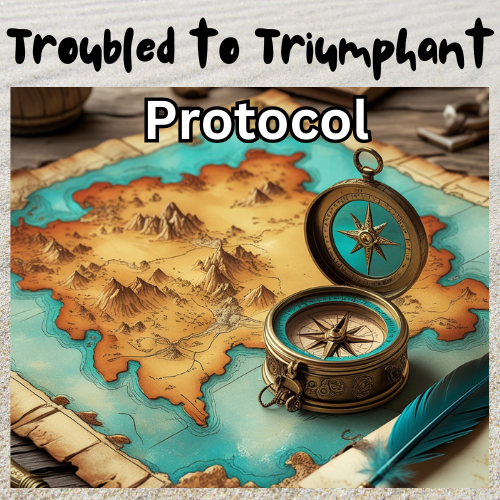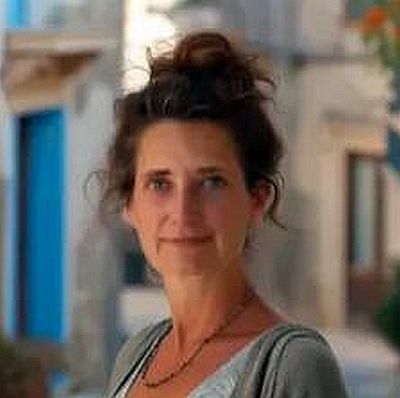Introduction
Imagine this: You’ve built an empire. You’ve crushed every milestone, scaled the career ladder with the grace of a seasoned mountaineer, and acquired the kind of success that most people only dream about. Your calendar is a masterpiece of efficiency, your net worth is impressive, and your LinkedIn bio reads like an elite executive’s greatest hits album.
And yet…
Somewhere between the power lunches, strategy meetings, and first-class flights, a quiet but persistent thought sneaks in: Is this it?
It’s not burnout (although, let’s be honest, you’ve skirted the edge of exhaustion more than once). It’s not failure (your track record proves otherwise). It’s something far more unsettling—a sense that you’ve spent years mastering the game, only to realise the rules no longer excite you.
And then an acquaintance mentions the Camino de Santiago.
Not a Pilgrimage. A Recalibration.
At first glance, the idea of walking across France and Spain with nothing but a backpack and your own thoughts sounds like something your former self—the one who thrived on urgency—would have dismissed outright. Why trade Michelin-starred dining for communal auberges and albergues? Why swap morning briefings for sunrise walks in solitude?
Here’s why:
Because for a growing number of high-achievers, the Camino is not about religion; it’s about reinvention. It’s where retired CEOs, successful entrepreneurs, and top-tier professionals go when their compass stops pointing north. It’s a place where the traditional markers of success—wealth, status, influence—become irrelevant, and deeper questions emerge.
Unlike an executive retreat or a luxury getaway, the Camino offers no curated experience, no VIP treatment, no escape from the elements or yourself. It is a great equaliser. The only currency that matters is resilience. The only strategy is surrender. And the only competition is from within.
For those accustomed to making things happen, this is both deeply unsettling and wildly liberating.
Boardrooms to Boots: The Growing Trend
If you think high-flyers don’t do pilgrimages, think again. From Silicon Valley founders to former investment bankers, the Camino is becoming a rite of passage for the already successful.
- Some walk after selling their companies, looking for what’s next.
- Others come after a divorce, needing space to untangle a life that was once neatly planned.
- Some arrive on doctor’s orders—stress, anxiety, the slow erosion of joy that no amount of quarterly wins can fix.
And here’s the real disruption: They don’t just return refreshed. They return transformed.
They step off the trail not just with stories, but with clarity. With a new understanding of success—not as an endpoint, but as a path. And perhaps most importantly, they learn that some of the best moves in life aren’t made in meeting rooms, but one step at a time, on a quiet road, with no destination but the next sunrise.
This article dives into the reasons behind this growing phenomenon—why the world’s most accomplished people are trading in their structured lives for a path that promises no guarantees, no shortcuts, and no accolades.
Walking Away from Wealth: The Big Life Changes That Trigger the Journey
For the ultra-successful, walking away from wealth sounds counterintuitive. You’ve spent years—decades, even—building an empire, perfecting the art of achievement, and accumulating the trappings of success. And yet, the Camino de Santiago is filled with people who have already “won” by society’s standards but find themselves craving something money can’t buy.
So, what makes executives trade their tailored suits for hiking gear? Why would a hedge fund manager swap market forecasts for unpredictable mountain weather? Major life shifts. The kind that no business strategy can prepare you for.
1. The Early-exit Strategy: Post-Success Identity Crisis
You’ve sold the company. The buyout is complete. The “freedom” you dreamed of is finally here. But instead of feeling liberated, you’re staring into the abyss of the unknown. For years, your identity was tied to your role—CEO, founder, industry disruptor. Without the title, who are you?
Many professionals, after hitting their peak, find themselves untethered. Retirement feels hollow, leisure lacks purpose, and the rush of the deal is suddenly gone. It’s a strange irony: after working tirelessly for autonomy, success begins to feel like a trap rather than a triumph.
Redefining success beyond external validation
On the Camino, no one cares about your resume. There’s no status, no special treatment, and certainly no VIP lounge. Instead of spreadsheets and stock prices, you’re faced with something far more challenging: your own thoughts.
Walking day after day strips away the need for external validation and forces you to redefine success on your own terms. Without board meetings and business cards, you get the rare chance to ask: What do I actually want?
Real-Life Example: From Wall Street to Walking Shoes
Take the story of Mark, a former hedge fund manager who cashed out early. On paper, he had everything. In reality, he felt directionless. “I didn’t know what to do with myself,” he admitted. So, he walked. By the time he reached Santiago, he had a fresh vision—not for another business, but for a life driven by meaning rather than metrics.
2. The Relationship Reckoning: Divorce, Empty Nest, and Personal Shifts
When life recalibrates, what’s left?
Success often demands sacrifice. For many high-achievers, that sacrifice comes in the form of neglected relationships. Work was the anchor, the excuse, the ever-present priority. But then—life happens.
- The marriage unravels.
- The kids move out.
- The midlife awakening arrives, uninvited.
And suddenly, without the buffer of work, there’s an emotional void that even the best business strategy can’t fill.
Processing, healing, and reimagining relationships
Unlike the usual distractions—work, travel, social obligations—the Camino forces you to sit with your emotions. With every step, professionals untangle past choices, reflect on what matters, and start envisioning a different future.
Real-Life Example: A post-divorce pilgrimage
Julia, a successful entrepreneur, walked the Camino after a high-profile divorce. She started the journey filled with regret and unanswered questions. By the end, she had a radically different outlook—not just on love, but on how to build relationships with the same intentionality she once reserved for business.
3. The Health Wake-Up Call: Burnout, Stress, and the Quest for Longevity
The cost of working that hard
You know the drill: always on, always pushing, always performing. But the human body has limits, and eventually, it demands payment—chronic stress, anxiety, or a full-blown health crisis.
For many, the wake-up call comes in the form of a doctor’s warning, a sudden illness, or sheer exhaustion that no vacation can fix.
Rewiring stress responses for sustainable success
Walking the Camino is the opposite of modern hustle culture. There’s no multitasking, no deadlines, just the steady rhythm of your footsteps. This slow, intentional pace isn’t just relaxing—it’s restorative.
- It rebuilds mental and physical resilience.
- It rewires the brain’s response to stress.
- It introduces a new model of peak performance—one based on sustainability rather than speed.
Walking as the ultimate reset button
What if longevity wasn’t found in biohacking, but in simplifying? Neuroscience confirms that walking enhances creativity, lowers cortisol, and restores balance. Some of the world’s most high-performing individuals are discovering that the best performance hack isn’t another productivity tool—it’s walking, unplugged, for days on end.
The Art of Surrender: Letting Go of Control
Successful people thrive on control. They strategise, optimise, and execute with precision. But on the Camino? Control is an illusion.
- You can’t control the blisters.
- You can’t control the weather.
- You can’t control who you meet (or who you wish you didn’t).
And yet, this very lack of control is where the magic happens. In business, success is about mastering outcomes. On the Camino, it’s about letting go—of expectations, of plans, of ego.
David, a high-powered executive, spent his career directing teams and making fast decisions. On the Camino, he learned that his best leadership moments came not from giving orders, but from listening.
Challenging Consumerism: Why ‘more’ isn’t always better
The Camino strips life down to its essentials. No luxury, no excess—just a backpack and the road. And for professionals accustomed to acquiring, this can be radically freeing.
A venture capitalist, used to high-stakes deals, walked the Camino with minimal possessions. He returned home and revolutionized his approach to business and life, focusing on efficiency, sustainability, and purpose over endless expansion.
Neuroscience of Movement: Walking unlocks the brain
Neuroscientists confirm that walking induces a meditative state, enhances creativity, and improves problem-solving. It’s no coincidence that some of history’s greatest thinkers—from Steve Jobs to Aristotle—walked to generate their best ideas.
For high-achievers, the hardest thing isn’t building an empire—it’s stepping away from it. The Camino de Santiago offers a rare opportunity to reset, rethink, and return with a clearer vision—not just for work, but for life.
And that’s why, despite all their wealth, success, and influence, the world’s most accomplished individuals are choosing to walk.
Why the World’s Most Successful People Are Choosing to Walk
Accomplished professionals rarely do things without a reason. If the Camino de Santiago were just a charming hike, it wouldn’t attract CEOs, investors, and industry leaders in droves. No, they walk because the Camino delivers something no amount of wealth, strategy, or optimization can replicate: a total life recalibration.
This isn’t about taking a break. It’s about shifting perspective in a way that boardrooms, luxury getaways, and even therapy often fail to achieve.
The world rewards momentum. Win once, and the expectation is to keep winning. Scale bigger. Innovate faster. Stay ahead.
The high-achiever’s biggest fear? Stagnation. The moment they stop moving, doubts creep in.
- Is this all there is?
- What if I’m chasing the wrong thing?
- Why am I still exhausted, even now I’m at the top?
Walking for hours each day is the ultimate paradox. You’re moving forward—literally—but without the usual external markers of achievement. There are no LinkedIn announcements, no quarterly targets, no applause.
Instead, the progress is internal. The Camino redefines what it means to “move ahead,” replacing external milestones with deep personal clarity.
Trading Hustle for Meaning
The Problem: Money Buys Comfort, Not Purpose
The thing about financial security? It solves practical problems but doesn’t answer existential ones.
You can outsource nearly everything—your investments, your diet, even your time management. But you can’t outsource meaning. That’s an inside job. No financial advisor, productivity coach, or AI-driven life planner can tell you what truly fulfills you. That part requires deep, personal introspection—the kind that doesn’t come from optimizing schedules but from stepping away from them entirely.
The Camino as a Solution: Reconnecting with What Matters
The Camino strips life down to its core essentials: food, shelter, movement, connection. That’s it. No status games, no distractions, no external validation—just you and the road ahead.
For high-achievers accustomed to solving problems with intellect, strategy, and efficiency, this can feel unsettling at first. Because meaning isn’t something you can figure out in a brainstorming session or map out in a five-year plan. It has to be felt. Lived. Walked.
This is why so many professionals find unexpected clarity on the Camino. Removed from the noise of daily obligations, they finally have the space to hear what their own inner voice has been trying to say all along.
The Shift: A New Definition of Success
One former CFO put it this way: “For years, I thought success was about winning. Now, I see it’s about alignment. Aligning what I do with who I truly am.”
The Camino doesn’t strip away ambition—it refines it. Instead of chasing more, successful walkers return chasing better. They realize that success isn’t about accumulation but about intention. It’s not about having it all, but about having what actually matters.
A First Step Toward Transformation
For those curious about the Camino but hesitant to commit to the full journey, my 7-day From Troubled to Triumphant transformational retreat offers the perfect taster experience. It includes three days of walking the Camino. You’ll step away from the noise, walk through breathtaking landscapes, and immerse yourself in the magic of the Camino—without the pressure of long-term planning. And sometimes, a few days are all it takes to completely shift perspectives, unlock clarity, and redefine what success truly means in the long run. And who knows? Your three days’ Camino walk may just be the beginning of a life-changing pilgrimage. Are you ready to take the first step?
Hit the pause button and regain your footing during a From Troubled to Triumphant Retreat. Imagine walking a peaceful stretch of the Camino de Santiago, where every step helps untangle the mental clutter or spending time with gentle Friesian horses who teach you the art of mindfulness. Whether you choose to make a change or are forced to, this retreat offers the perfect blend of peace, perspective, and playful exploration to help you rise from troubled to triumphant!

Conclusion: The Boldest Move? Walking Away
At a certain level, success isn’t about money, power, or prestige. It’s about freedom. But real freedom isn’t just the ability to acquire—it’s the ability to walk away. And that’s what makes the Camino so powerful. It’s not a vacation. It’s not an escape. It’s a deliberate choice to step outside the structures of success and ask:
What comes next?
Not according to society.
Not according to shareholders.
Not according to a five-year strategic plan.
But according to you.
I put the essence of who I am, and everything I have experienced that makes me who I am, with great enthusiasm, into my retreats, courses and books. – Dr Margaretha Montagu (MBChB, MRCGP, NLP master pract (cert,) Transformational Life Coach (dip,) Life Story Coach (cert) Counselling (cert,) Med Hypnotherapy (dip) and EAGALA (cert)
















